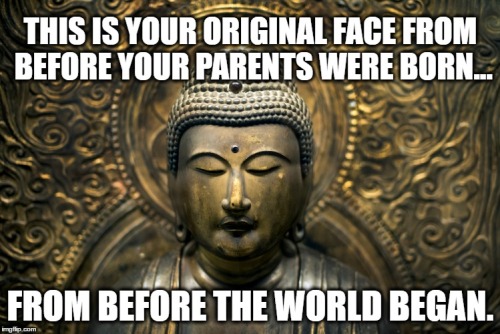For almost the last three years, I’ve been part of the Jodo Shinshu tradition of Japanese Buddhism, though my interpretations of Shinshu teaching aren’t always ‘orthodox,’ as I’m also influenced by Ch’an/Zen.
I recite the Nembutsu, NAMU-AMIDA-BUTSU, the name of Amida Buddha, with the understanding that our true nature and Amida’s are ultimately the same:
The Mahayana tradition strongly emphasizes that every sentient being has buddha-nature (Skt. buddhata, Jp. bussho). We have buddha-nature within ourselves. A buddha and an ordinary person are ultimately the same by nature, the same ontologically. The only difference is the degree of apprehension of truth. A buddha has attained perfect wisdom, but we sentient beings have not yet attained it. That is, a buddha and an ordinary person differ from each other epistemologically.
http://www.jodo.org/about_plb/what_plb.html
In terms of practice, I am in line with traditional Shinshu practice, but I also voluntarily observe the five precepts, including vegetarianism and abstaining from intoxicants.
I don’t attempt any complex visualization practices other than maybe thinking of an image of Amida Buddha while reciting the Nembutsu. Sometimes, as they do in Zen, I also imagine my body as the body of the Buddha.
The nenju beads in a loop represent that all beings are interconnected in the wisdom and compassion of Amida Buddha. Unlike a rosary, the beads are not for counting, since there is no set number of Nembutsus to recite.
One’s recitation of the Nembutsu is free and spontaneous, and need not be especially focused or concentrated. If Amida is already our true nature, it need not be forced.
It is sort of like the Taoist concept of naturalness. We simply relax in gratitude, letting the Nembutsu do its work in our life. In reciting Amida’s name, we awaken to our True Self.
The Buddha’s last words were to be a lamp unto yourself, seeking no external refuge. How do we square this with the Nembutsu, since Namu-Amida-Butsu means “I take refuge in Amida Buddha”?
The name Amida means “boundless light.” Amida, rather than an external refuge, is the boundless light of our own Buddha-nature. In reciting the Nembutsu, we awaken to the True Self, the lamp within.
Rather than a literal flesh and blood man who attained Buddhahood ten kalpas ago, billions of Buddha-lands to the west, Amida is Dharma-body itself, the Buddha-nature in all things and beings.

